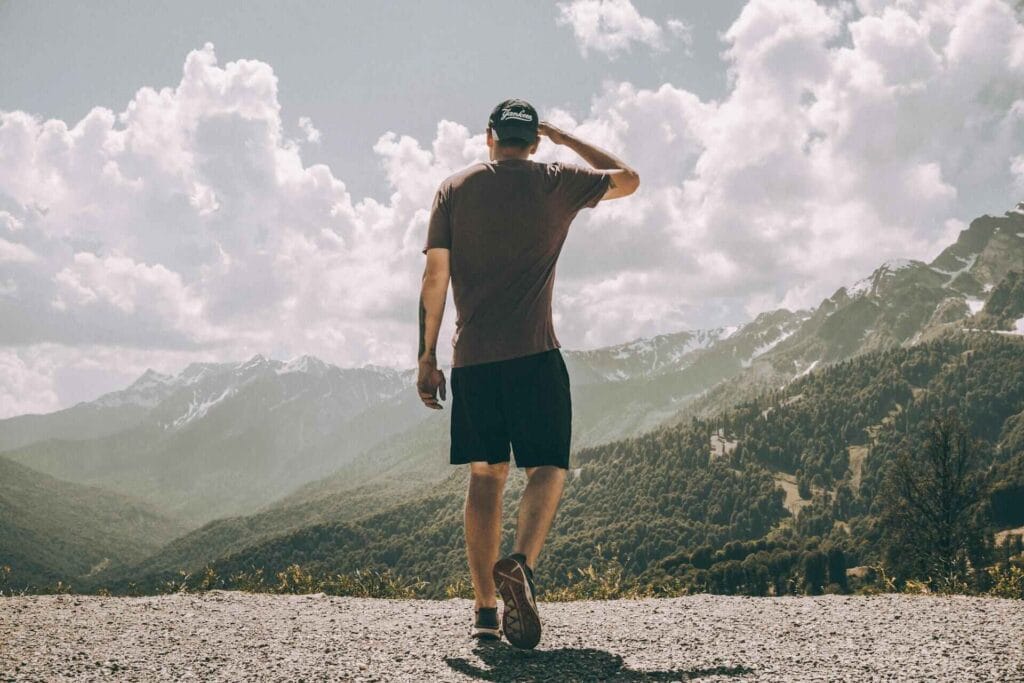Feeling Stuck in Life? Here’s How to Become More Self Aware and Break Free
Many people stay stuck because they avoid self-awareness. Learn how to become more self aware, break free from hidden patterns, and change your life. This blog reveals the true cost of avoiding self-awareness—and how understanding your thoughts, habits, and emotions can set you free. Includes my personal story and practical tips.

In Today’s Fast-Paced World, Why Are We So Unaware?
We live in an age of distraction. Notifications, social comparison, constant noise. In this chaos, it’s incredibly easy to lose connection with ourselves.
Some people don’t even know what self-awareness is. Others have heard the word but don’t know how to live it. And then there are people like the “old me”—who thought they knew themselves, but were trapped in unconscious habits and thoughts.
Let’s dive deep into what self-awareness really is—and how it can change your life forever.
What Is Self-Awareness, Really?
Self-awareness is the ability to observe and understand your own thoughts, emotions, behaviors, and motives in the present moment. If you’ve ever wondered how to become more self aware, it starts with simply noticing what you’re doing, why you’re doing it, and how it affects you and others.
In simple terms: it’s just observing yourself. That’s it.
It might sound too simple, even pointless. You might think, “I already know what I do every day.” But trust me—when you practice this deeply and consistently, you start seeing things you never noticed before. Patterns. Triggers. Emotional reactions. Habits that were silently shaping your life.
And when you notice them, you take back your power.
My Personal Story: From Unconscious Living to Self-Awareness
Let me share how this practice changed me.
I used to be short-tempered. I’d get angry over the smallest things. I wasted hours—without realizing it—overthinking, daydreaming, building imaginary conversations in my head. I was constantly seeking validation.
I didn’t know I was doing these things. They were invisible to me. That’s what a lack of self-awareness does—it blinds you to your own behavior.
I’ve always been drawn to philosophy. I had a million questions about existence and purpose. (I’ve written about that in this post—feel free to check it out.)
But it wasn’t until I was visiting my village for a 12-day holiday that I stumbled onto something powerful. One quiet afternoon, I just started watching myself. I began to notice my thoughts, emotions, and reactions. I didn’t even know this had a name—until I later realized it was called self-awareness.
It wasn’t easy. I’d forget to practice. So I pinned a note to the top of my digital notepad that simply said: “Observe yourself.” That note became my anchor.
Now, it’s second nature.
When I get angry, I pause. I ask:
“What am I feeling?”
“Why?”
“Is it worth it?”
“What’s the likely outcome?”
Another big one for me was building imaginary conversations. I’d spend hours planning what I’d say to people—thinking through their responses, my comebacks, all in my head.
But in real life? 5–10% of those conversations ever happened. Sometimes I’d prepare for talking to people on a bus before I even met them—and then never spoke a word to them.
At one point, I thought, “Am I mentally ill? Why do I do this?”
But when I became more self-aware, I could catch myself doing it. I’d say, “Why am I wasting time thinking about conversations that may never happen?” That simple awareness was enough to pull me out.
And once you’ve named a pattern like that—once you’ve observed it enough times—you don’t need to go through the whole analysis again. You just know: “Oh, it’s that thing again.” And you stop. Because you’ve already seen where it leads.
If you’re wondering how to become more self aware, the good news is that it’s a skill you can build. Here’s how I started…

How to Practice Self-Awareness (Based on My Own Journey)
Now let’s break down how to become more self aware, step by step, based on what actually worked for me:
- Pause and Observe Yourself
Start with small pauses. When an emotion shows up—don’t act. Just watch it.
Ask:
What’s happening inside me?
Why am I feeling this?
What triggered this?
Is this helpful or harmful?
This alone creates massive space for clarity. - Name Your Patterns
Give your habits a label. That gives you distance.
For example:
“Here’s the validation loop again.”
“This is my inner people-pleaser.”
“Here’s the imaginary conversation spiral.”
Naming it makes it easier to interrupt. - Use Simple Daily Reminders
I used a digital note pinned to the top of my phone. You can use:
Sticky notes
Phone widgets
Alarms labeled “Check in with yourself”
Tiny nudges help you stay conscious. - Reflect at Night
Ask yourself:
“What did I do today that didn’t align with me?”
“What triggered me today?”
“What am I proud of?”
You’ll slowly start to see patterns. - Track Repeated Emotional Triggers
If something keeps happening (like my anger or overthinking), pay attention. That’s your unconscious screaming for attention.
Ask:
Where is this coming from?
What belief or fear is behind it?
How does it serve me?
Follow the thread. - Build the Muscle Over Time
At first, you’ll notice your reactions after they happen. Then during. Then before.
Eventually, you’ll stop reacting—and start choosing. That’s real self-mastery.
Examples of People Who Embody Self-Awareness
You don’t have to be a monk to be self-aware. Look at:
Marcus Aurelius – As a Roman emperor and Stoic philosopher, Marcus Aurelius practiced deep self-awareness through daily journaling and reflection, later compiled as Meditations. He constantly examined his thoughts, emotions, and duties, reminding himself to stay grounded, rational, and aligned with virtue—even amid chaos.
Viktor Frankl – In the darkest place imaginable—a Nazi concentration camp—Frankl realized that while we can’t always control what happens to us, we can control how we respond. His work taught that the space between stimulus and response is where our freedom lies.
Oprah Winfrey – Oprah’s rise from a traumatic childhood to global influence is rooted in self-awareness. Through journaling, therapy, and reflection, she learned how to become more self aware and confront her inner wounds instead of avoiding them. As she says, “You can change your future by merely changing your attitude”—and that change starts with honest self-awareness.
Carl Jung – Jung wasn’t just a psychologist. He was a guide into the hidden corners of the mind. He taught that self-awareness means facing your unconscious “shadow”—the parts of you that you deny or suppress. Real growth starts when you integrate those parts.
Siddhartha Gautama – He left behind a royal life in search of understanding suffering. His path was built entirely on inner observation—Vipassana meditation itself is a practice of pure self-awareness. Through watching the mind and sensations, he discovered liberation. Vipassana, the practice of self-observation taught by Siddhartha Gautama, is taught today in silent retreats across the world. Learn more about it here.

Once You’re Aware… What’s Next?
Awareness alone is not enough.
Once you see your patterns, you must act:
Stop feeding the habits that drain you.
Build small behaviors that align with your values.
Catch and correct yourself with kindness—not guilt. Because what’s the point of knowing yourself, if you’re not going to live like it?
Learning how to become more self aware isn’t the end—it’s the beginning of a more intentional life.
Final Thoughts
Self-awareness isn’t some spiritual buzzword. It’s survival. In a world full of distractions, it’s the one thing that keeps you grounded.
It helped me stop wasting time, understand myself, and slowly become who I actually want to be—not just someone reacting to life.
And If you’ve been feeling stuck or disconnected, maybe it’s time to finally learn how to become more self aware—and take that first small step.
Start today.
Even if it feels small. Even if it feels silly. Just observe.
It’ll change everything.

3 Comments